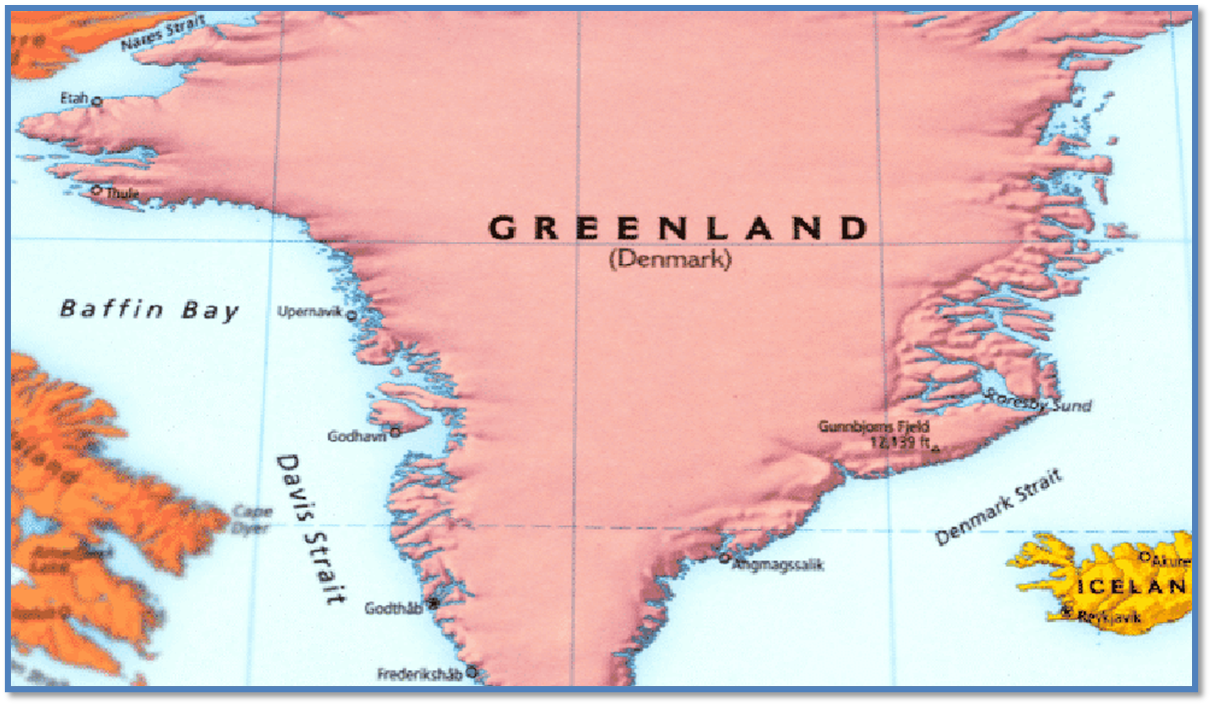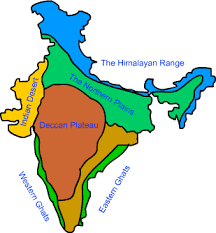A microcontinent has been recently discovered in the Davis Strait, between Canada and Greenland.

About the newly discovered Microcontinent:
- The discovery was made around the Davis Strait, a large stretch of water located between Canada’s Baffin Island and Greenland.
- The strait was formed millions of years ago when the tectonic plates between the two islands shifted, reconfiguring the Earth’s crust.
- This resulted in the formation of a thick continental crust in the ocean, which has now been declared a newly discovered primitive microcontinent.
- It has been named the Davis Strait proto-microcontinent since it formed owing to the tectonic evolution of the strait in the region.
- The microcontinent is 19–24 km thick thinned continental crust and is surrounded by two narrow bands of thin (15–17 km) continental crust.
Key Facts about Davis Strait:
- Also known as the northern arm of the Atlantic Ocean, the Davis Strait is situated north of the Labrador Sea amidst southwestern Greenland and southeastern Baffin Island in Nunavut, Canada.
- It separates the depths of northern Baffin Bay from the southern Labrador Sea and forms an important part of the Northwest passage route going through the Canadian Arctic Archipelago and connecting the Atlantic and Pacific Oceans.
o Baffin Bay is situated between Baffin Island and Greenland’s west coast.
o Defined as a marginal sea of the Arctic Ocean, it is also considered a small sea of the North Atlantic.
o It is not navigable during the winter months due to the thick ice cover, floating icebergs and heavy fog.
- The Davis Strait is approximately 400 miles (650 km) north to south and 200 to 400 miles wide.
- It has a water depth ranging from 1000 to 2000 metres, and is comparatively shallower than the southern Labrador Sea.
- The Davis Strait is home to complex geological formations such as underwater basins and ridges that were created due to the strike-slip faulting along the Ungava fault Zone around 45 to 62 million years ago.
- It triggered plate tectonic movements in the Labrador Sea and the Baffin Bay, leading to the formation of the Strait.
- Two different ocean currents are active in the Davis Strait, with contrasting temperatures leading to varying concentrations of ice on the eastern and western sides of the Strait.
o From the shores of Greenland, the western Greenland current carries comparatively warmer waters towards the east, while the Labrador current pushes iceberg-filled water southward along the Canadian coast, the Labrador Sea, and subsequently the Atlantic.
o Ice conditions reflect this flow regime, with heavy ice movement and icebergs along the western shore contrasting sharply with more open water along the Greenland side.




